The Berkshires Bowling Alley that Inspired "The Big Lebowski"
It’s been 36 years since the release of The Big Lebowski, the irreverent cult comedy by Joel and Ethan


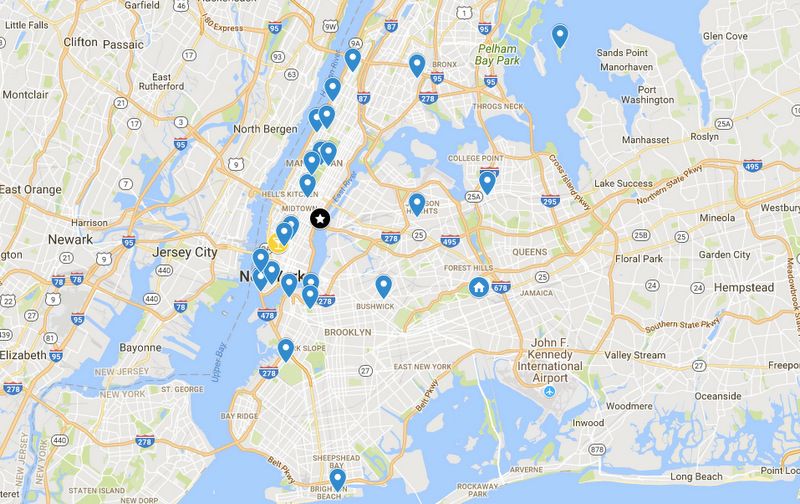
Screenshot of the Peace Trail Map of New York City. Courtesy of the students and professors from the Fall 2016 Justice and Rights Movements class at NYU.
In Fall 2016, students from the Justice and Rights Movements class at New York University under the tutelage of Professors Joyce Apsel and Michael Dinwiddie, supported by a co-teaching grant from the NYU Humanities Center, created a peace trail map of New York City.
On the map, students chose 27 spots across the city associated with significant moments and people in the city’s and world’s history who played important roles in movements for freedom, justice, and peace. The information below comes largely from the meticulous research done by the students.
International Day of Peace, also known as Peace Day, is celebrated worldwide every September 21. Established by the United Nations in 1981, it is a day meant to put aside difference to celebrate peace across humanity. This year’s theme is “Together for Peace: Respect, Safety and Dignity for All,” with an emphasis on support for refugees and migrants.
We chose 10 of the 27 spots on the peace trail map of NYC to honor the places and people that invoke peace and celebrate diversity throughout the city.

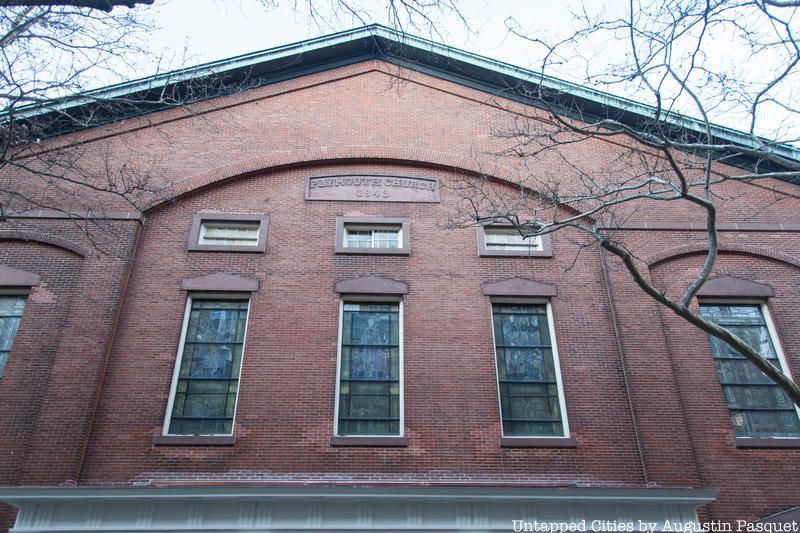
Plymouth Church in Brooklyn played a part in the Underground Railroad.
Erected in 1849, Plymouth Church in Brooklyn Heights was once a part of the Underground Railroad under the care of Henry Ward Beecher, the brother of abolitionist Harriet Beecher Stowe. It was known as “The Grand Depot,” as slaves were hidden within the tunnels of the church’s basement.
Beecher often freed slaves during mock slave auctions at the church, and famously freed nine-year-old slave girl Sally Maria Diggs, known as “Pinky” after raising $900 with the donation of a gold ring. Plymouth Church is also notable for its famous speakers, including Abraham Lincoln and Martin Luther King Jr., who gave an early version of his “I Have a Dream Speech” at the pulpit.
Interestingly, Plymouth Church is named for the original Plymouth Rock in Massachusetts, a piece of which resides in this church.
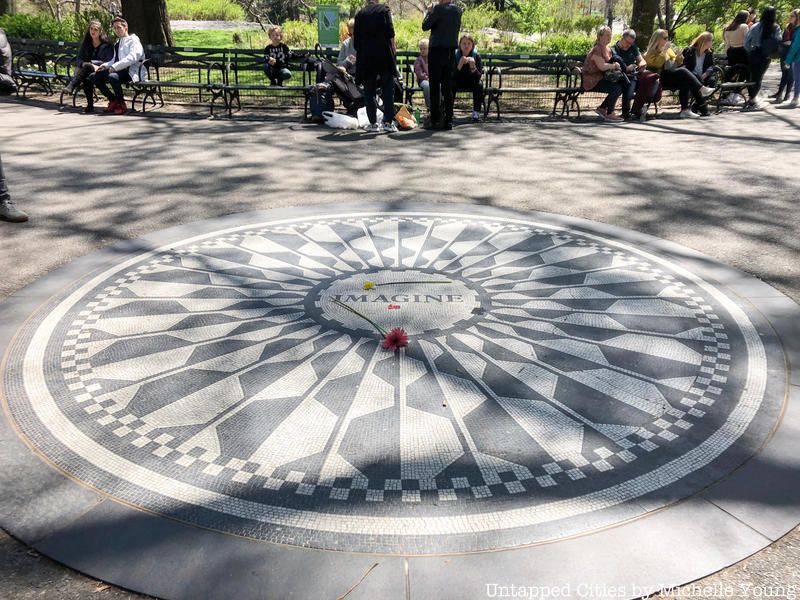 Strawberry Fields exists in Central Park as a memorial to John Lennon
Strawberry Fields exists in Central Park as a memorial to John Lennon
Strawberry Fields, located in Central Park, is a memorial for the legendary musician and social activist John Lennon, who was shot and killed at the nearby Dakota Apartments in 1980. The memorial was created at the place where Lennon’s ashes were scattered and was named after The Beatles‘ hit “Strawberry Fields Forever,” written by Lennon.
Besides being a member of The Beatles, Lennon was known for his peace activism, with his most famous solo song “Imagine” promoting peace and tolerance among different nationalities and religions. The memorial was designed by Bruce Kelly, the chief landscape architect for the Central Park Conservancy, and is populated by fans on Lennon’s birthday as well as on the anniversary of his death on December 8.
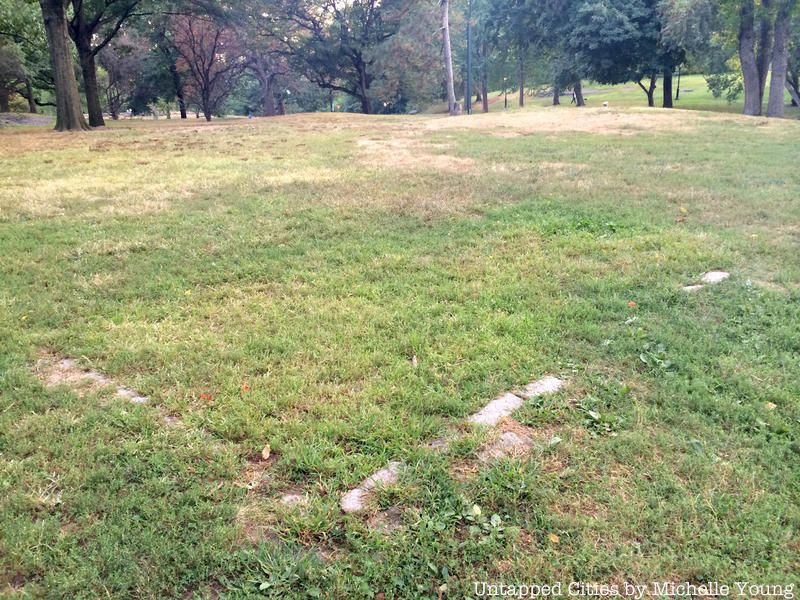 Foundation remnants of Seneca Village in Central Park
Foundation remnants of Seneca Village in Central Park
In 1825, Epiphany Davis and Andrew Williams, two free, working class African Americans purchased a plot of land which reached from West 82nd to West 85th Streets between Seventh and Eighth Avenues. A crucial location in African American history, Seneca Village provided a rare opportunity for land ownership which consequently secured voting eligibility for its residents. Though it was disbanded due to the construction of Central Park, Seneca Village was a village of approximately 1,600 residents of various nationalities who worshiped together at the All Angels Church.
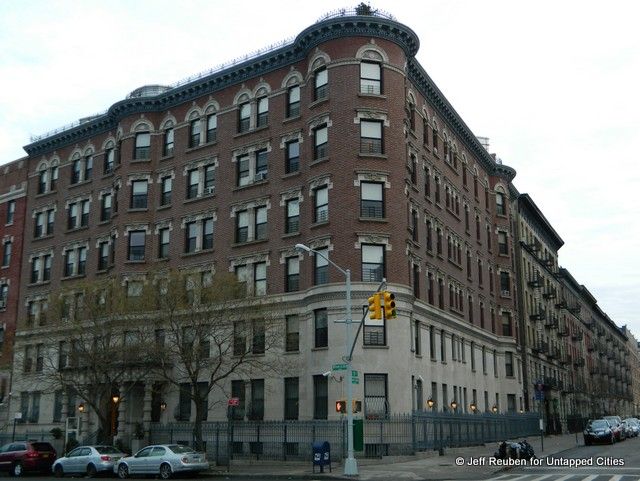
The Dorothy Day Apartments provide homes for the formerly homeless.
Broadway Housing Community’s Dorothy Day Apartments, located in Harlem at 135th Street and Riverside Ave, are home to 70 units of low-income housing, occupied by 190 residents. Opened in 2004, these apartments comprise the first building ever specifically intended to provide permanent homes for those who were previously homeless.
The building is equipped with several amenities, such as childcare services, after school programs, and social and career services. The building is named after journalist and activist Dorothy Day, who converted to Catholicism in adulthood and promoted pacifism until her death in 1980. Day summed up her beliefs and work with the Catholic Worker Movement in her book, House of Hospitality, stating: “Love and ever more love is the only solution to every problem that comes up.”
Clip from “In Our Hands,” a feature-length documentary celebrating the peaceful June 12, 1982 anti nuclear demonstration. Via YouTube.
The 55-acre Great Lawn in Central Park is America’s first public park and has been the site for many peaceful demonstrations. Among these demonstrations was one which opposed the nuclear arms race. On June 12, 1982, hundreds of thousands of demonstrators congregated on the Great Lawn, marking the largest disarmament demonstration in the nation’s history.
For the past six years, the Great Lawn has been home to the yearly Global Citizen Festival, a music festival which rewards fans with free tickets to see top artists for actions such as calling senators and signing petitions on such issues as health, gender equality, education, and environmental issues.
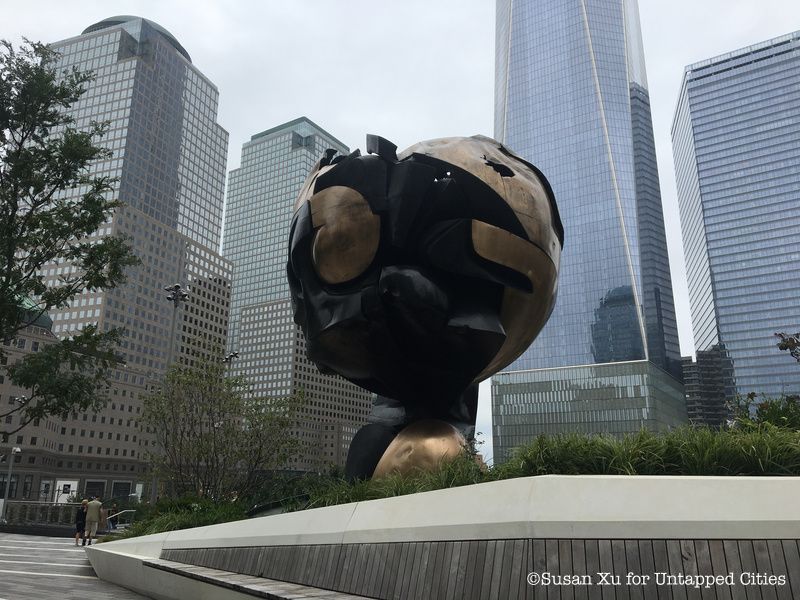
The Sphere was rededicated to the victims of 9/11 after it was partially destroyed in the attacks.
Originally designed by Fritz Koenig as a symbol of peace through world trade, the Sphere was situated between the World Trade Centers in 1971. The monument was partially destroyed during the September 11 attacks, and its fate was left uncertain for several months following. The Sphere was eventually placed in Battery Park in 2002 and was rededicated to the victims of 9/11. It remained in Battery Park until August 16, 2017, when it was relocated to Liberty Park, overlooking the 9/11 Memorial site.
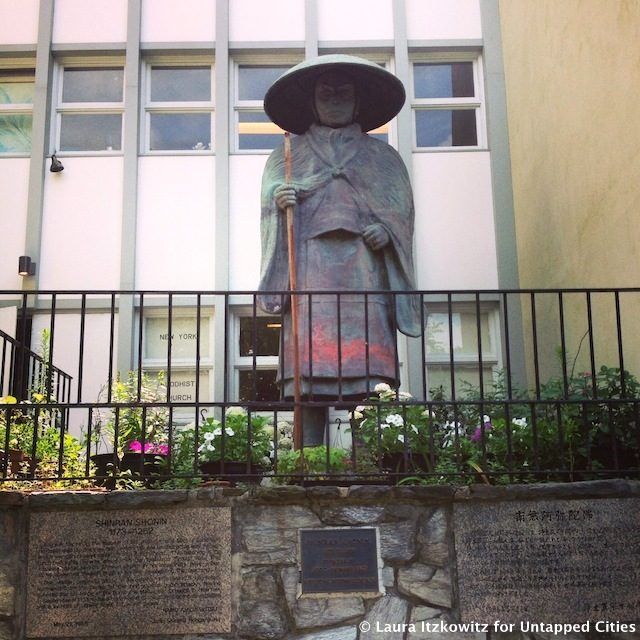
The Shinran Shonin statue stands as a sign of peace between nations.
The Shinran Shonin statue, located on the Upper West Side, came from Hiroshima to New York City after the WWII bombing of the Japanese city which killed 150,000 on August 6, 1945. Unlike the city itself, the statue depicting Shinran Shonin, founder of the Jodo Shinshu School of Buddhism in the early 13th century, was found completely intact after the bombing.
It was then was offered to the United Nations as a sign of peace. The statue now resides in front of the New York Buddhist Church, where services and meditation sessions are often held in front of the statue to honor the Japanese lives lost.

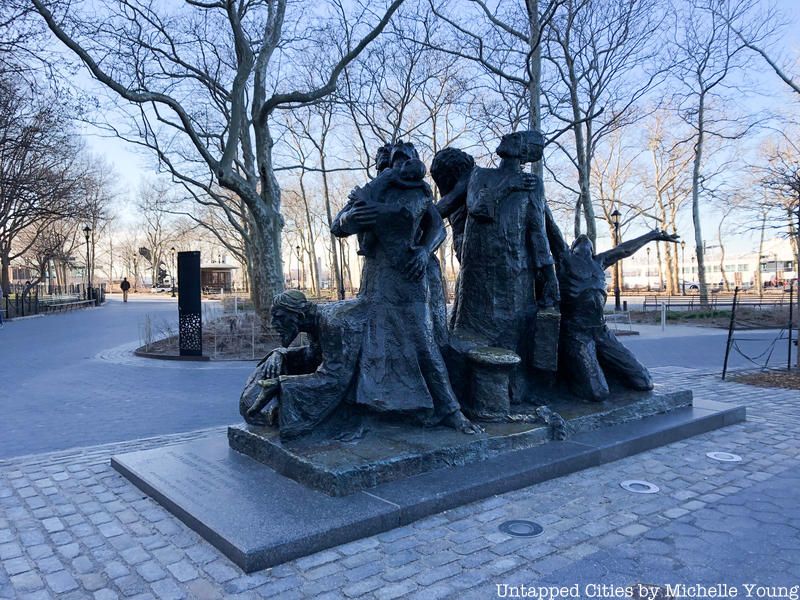
“The Immigrants” sculpture in Battery Park stands as a symbol of diversity.
Created by Spanish sculptor Luis Sanguino, The Immigrants sculpture in Battery Park celebrates the diversity of New York City. The bronze statue depicts several different ethnic groups and emphasizes the struggle of immigration and dislocation. It is situated near Castle Clinton, a processing facility frequented by many immigrants in the 19th century before the opening of Ellis Island in 1892.
The Immigrants was donated by Samuel Rudin, in memory of his parents who emigrated to the United States in the late 19th century. Rudin passed away in 1975, before the sculpture could be completed, but his family made his dream a reality by using the money he left to commission it, dedicating it on May 4, 1983.
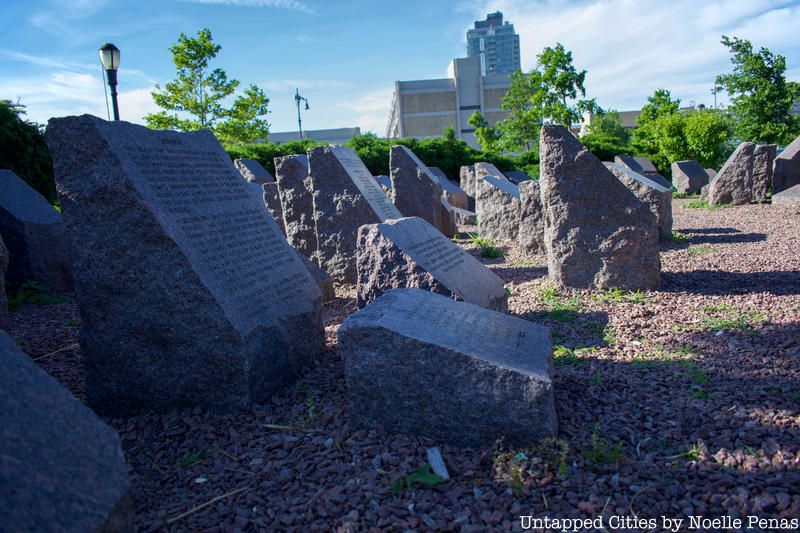
New York’s first public memorial to the Holocaust is located in Sheepshead Bay, Brooklyn. The park was dedicated by Mayor Edward Koch in 1985, and Mayor Rudolph Giuliani dedicated the memorial itself in 1997. The Holocaust Memorial Committee and the New York City Parks Department collaborated on this memorial, which features steel bars partially covered in brick, topped by a bronze flame used to symbolize the eternal memory of those lost in the Holocaust.
Rings of granite edge the bottom of the memorial and are engraved with nations greatly affected by the Holocaust, including Germany, Hungary, Poland, and Austria. Over 200 granite slabs are arranged around this, etched with names of the lives lost. The Holocaust Memorial Committee hopes to construct a Holocaust Education Center in the future to “address the urgent need to prevent hatred and anti-Semitism and to educate people about the lessons of the Holocaust and the tragic impact of bigotry and discrimination.”
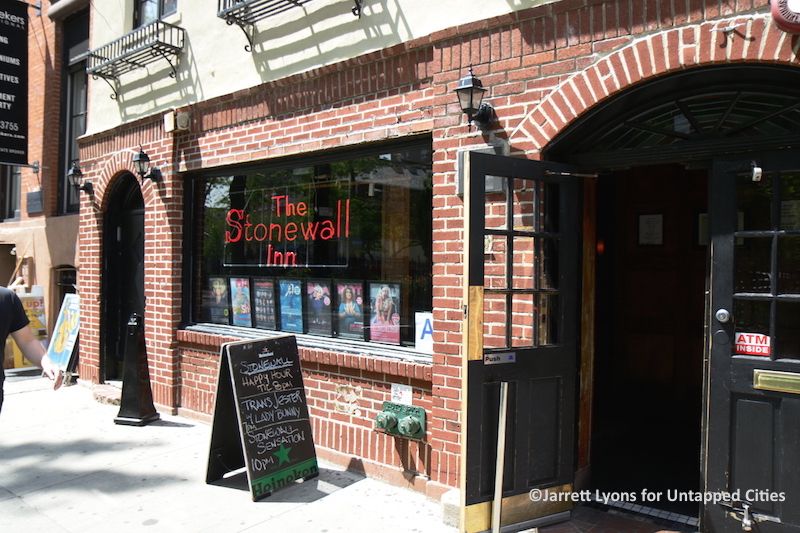
The Stonewall Inn in Greenwich Village is known as the birthplace of the gay liberation movement.
The Stonewall Inn, located in Greenwich Village, was the largest gay establishment in the United States when it opened its doors in 1967. This bar was often subjected to routine police raids. On June 28, 1969, one such raid, orchestrated by undercover police officers, took longer than usual and resulted in a large crowd forming outside the tavern. As police struggled with a handcuffed female patron, the crowd grew violent.
Riots continued for several days following and saw confrontation between Greenwich Village residents and police. These riots and their subsequent media coverage sparked action to fight the oppression of the gay community by police, and The Stonewall Inn is thus known as the birthplace of the gay liberation movement. In 2015, the New York City Landmarks Preservation Commission designated the Stonewall Inn as a city landmark, and in 2016, President Obama declared it and the surrounding area The Stone National Monument, the first national park dedicated to the gay rights movement.
On December 7, 1971, an important gathering of 40 of New York City’s biggest gangs organized by a group called the Ghetto Brothers took place at the Boys & Girls Club on Hoe Avenue in the Bronx. Inspired by the work of the Black Panthers, the Ghetto Brothers transformed themselves from a gang into a community group to address the reoccurring violence in their neighborhoods.
“Warlords” in charge of enforcing gang terrorizes became “peace ambassadors” in an effort to broker a peace treaty that would effectively eradicate gang violence in the Bronx virtually overnight. The meeting resulted from the murder of Cornell “Black Benji” Benjamin who was killed while trying to mediate a truce between gangs. The treaty remained largely successful until the Crack epidemic rose in the 1980s.
Interestingly, the alliance formed that day also created the foundations on which the hip-hop movement of the ’80s would come out of.
The additional 16 sites on the Peace Trail Map are the Malcolm X & Dr. Betty Shabazz Memorial and Educational Center, Ralph Bunche’s House, the Hart Island Memorial, the Cathedral of St. John the Divine, Julio Rivera Corner, Make The Road New York & Know Your Rights mural, Robert Brownjohn Peace Poster, Mahatma Gandhi Statue in Union Square, Green-Wood Cemetery, Shared Studios, Statue of Edward Snowden: Prison Ship Martyrs’ Monument 2.0, Irish Hunger Memorial, Flushing Quaker Meeting House, and last but not least, the United Nations.
Next, check out 10 Influential Figures of NYC’s LGBTQ Rights Movement and 10 Places to Honor Martin Luther King Jr. in NYC.
Subscribe to our newsletter